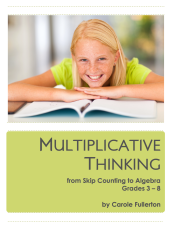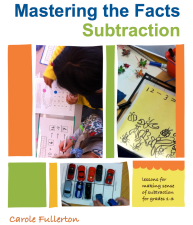Cuisenaire rods ROCK.
 Here are some of my favourite Cuisenaire rod tasks for elementary. There are so many cool things to be done with these materials, I can’t begin to delve into it all here, but start with some of these ideas and see what kinds of thinking your students come up with. Remember it’s critical to record the numbers to accompany with your students’ constructions – modelling for them how a mathematician would record their reasoning is so very important. It allows students to formalize their learning and make connections to the “naked math”… (A phrase a dear friend of mine used to use often. Attention-getting, no??)
Here are some of my favourite Cuisenaire rod tasks for elementary. There are so many cool things to be done with these materials, I can’t begin to delve into it all here, but start with some of these ideas and see what kinds of thinking your students come up with. Remember it’s critical to record the numbers to accompany with your students’ constructions – modelling for them how a mathematician would record their reasoning is so very important. It allows students to formalize their learning and make connections to the “naked math”… (A phrase a dear friend of mine used to use often. Attention-getting, no??)
 As well, I’ve uploaded are some Cuisenaire provocations — images to inspire creativity that your younger students may enjoy. To keep the play moving mathematically, try placing one or more of these pictures at the table where students are exploring the materials. You can suggest they might like to try making something like the image, but it’s much more interesting to simply place the image on the table and walk away. Your students will no doubt do something with the picture – and it’s oh-so-fun to observe them in action!
As well, I’ve uploaded are some Cuisenaire provocations — images to inspire creativity that your younger students may enjoy. To keep the play moving mathematically, try placing one or more of these pictures at the table where students are exploring the materials. You can suggest they might like to try making something like the image, but it’s much more interesting to simply place the image on the table and walk away. Your students will no doubt do something with the picture – and it’s oh-so-fun to observe them in action!
Look around your school for Cuisenaire rods – it’s not unusual to find them stashed away in a cupboard somewhere, forgotten. They are a classic manipulative and one with great possibilities. If you find them and want to figure out ways to use them, don’t hesitate to contact me. I’d be happy to provide a workshop for your school staff, or to do a series of demonstration lessons with students across the grades with these versatile materials.
My favourite place to order Cuisenaire rods is through Spectrum Educational. Be sure to get the wooden materials only – they truly demonstrate the relationships in the most compelling way. Here’s a link to a class set of wooden materials from their on-line catalogue. For those of you in the lower mainland of BC, be sure to call Collins Educational — or drop by to pick some up. They’re always happy to help.
Enjoy a lovely weekend.
Carole
Open-ended Problems for K-4
Last week I gave a session for teachers in Coquitlam looking to teach – and assess – problem-solving. We talked about what made a good problem, both in terms of content and wording, then worked through some samples across the grades. I have posted a selection of problems for you here, which I invite you to download and use with your students.

Remember that it’s important to collect students’ thinking in a variety of forms – numbers, pictures and words, to have them engage with models or manipulatives, and wherever possible to have students communicate their understandings about a concept by translating them to a problem of their own. The latter is no small task! :o) John Van de Walle’s diagram outlines the importance of not only including these representations but also connecting and bridging between them. Students learn deeply when they transform their learning from numbers to models, from words to pictures, from problems to numbers and back again…
Carole








